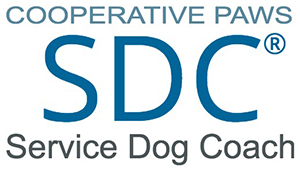

Service Dog Training |
||
Service dogs are defined in the Americans with Disabilities Act and are dogs that are specifically trained to help people with disabilities. I help people with disabilities train their own dog to assist them as a service dog. Emotional Support Animal (ESA) Training ESA’s are not the same thing as service animals and are not allowed places pets are not permitted, but arecurrently allowed on the cabin of a plane and in some types of no-pet housing. We can help ESA’s be calm forair travel and teach good manners if they are living no-pet housing.  Phone Consultations Receive guidance to select a dog for service work, an ESA or learn about service dog training. Requirements
 Requirements for the Dog Requirements for the Dog
My Process Step 1 A phone appointment where we discuss your needs, identify tasks that would be helpful to train, review your dog’s behavioral history, educate you on reputable service dog informational resources and give you some training recommendations. Step 2 An in-person evaluation of your dog. This is where we look at how your dogresponds to some minor stressors and in a new situation to see if it is appropriate to begin training him or herfor service work. Step 3 Training for service work if your dog is suitable. This process usually takes 1 – 2 years but can take longer. Step 4 Follow up support. Ongoing brush up training throughout your service dog’s working career. |
||